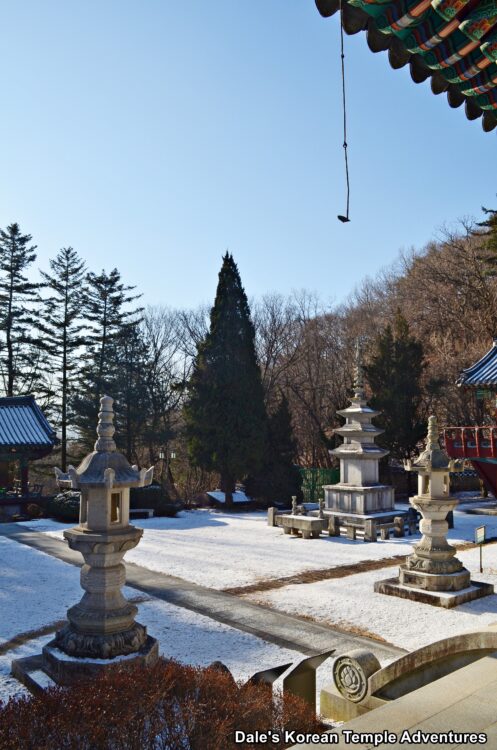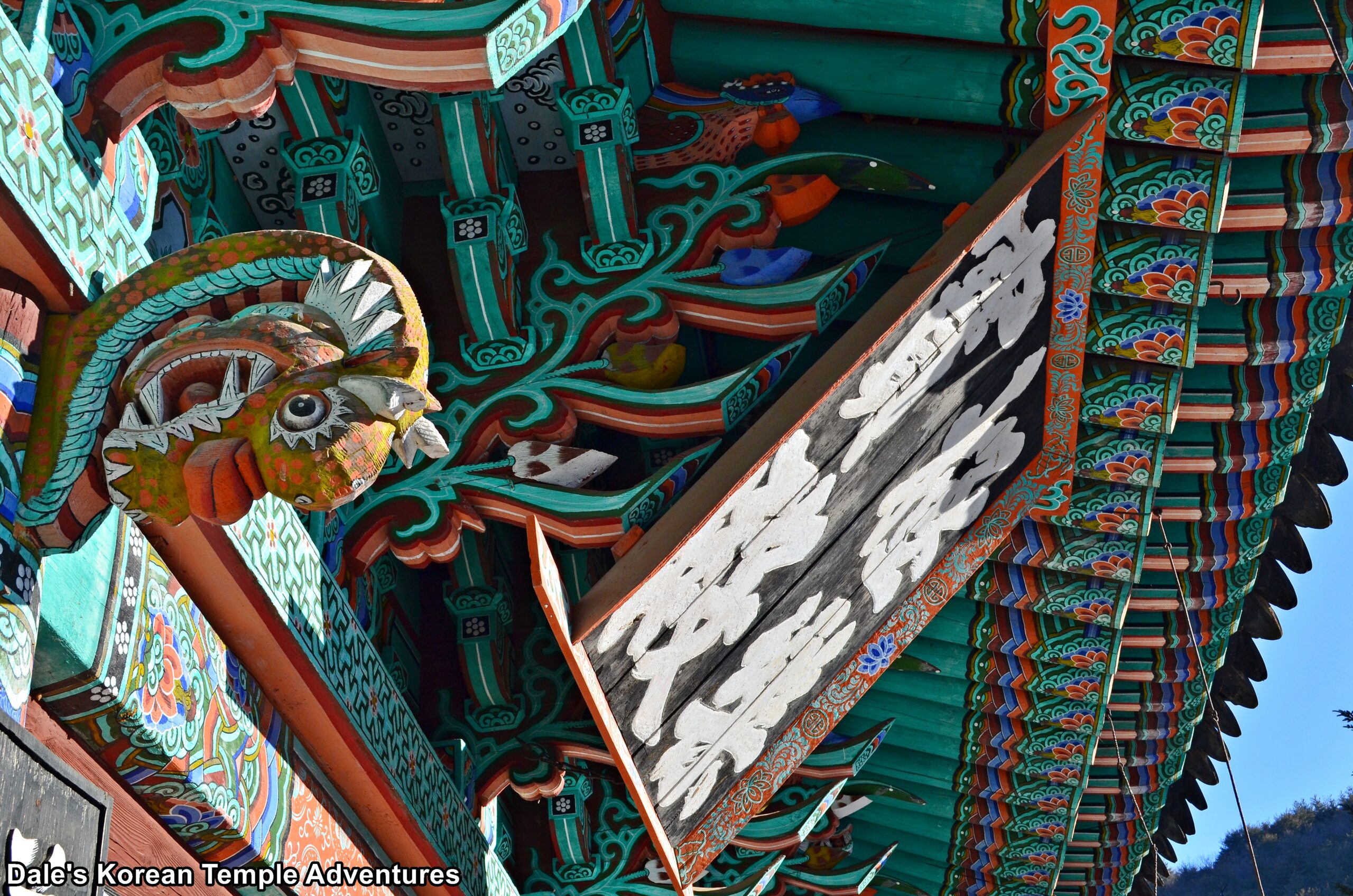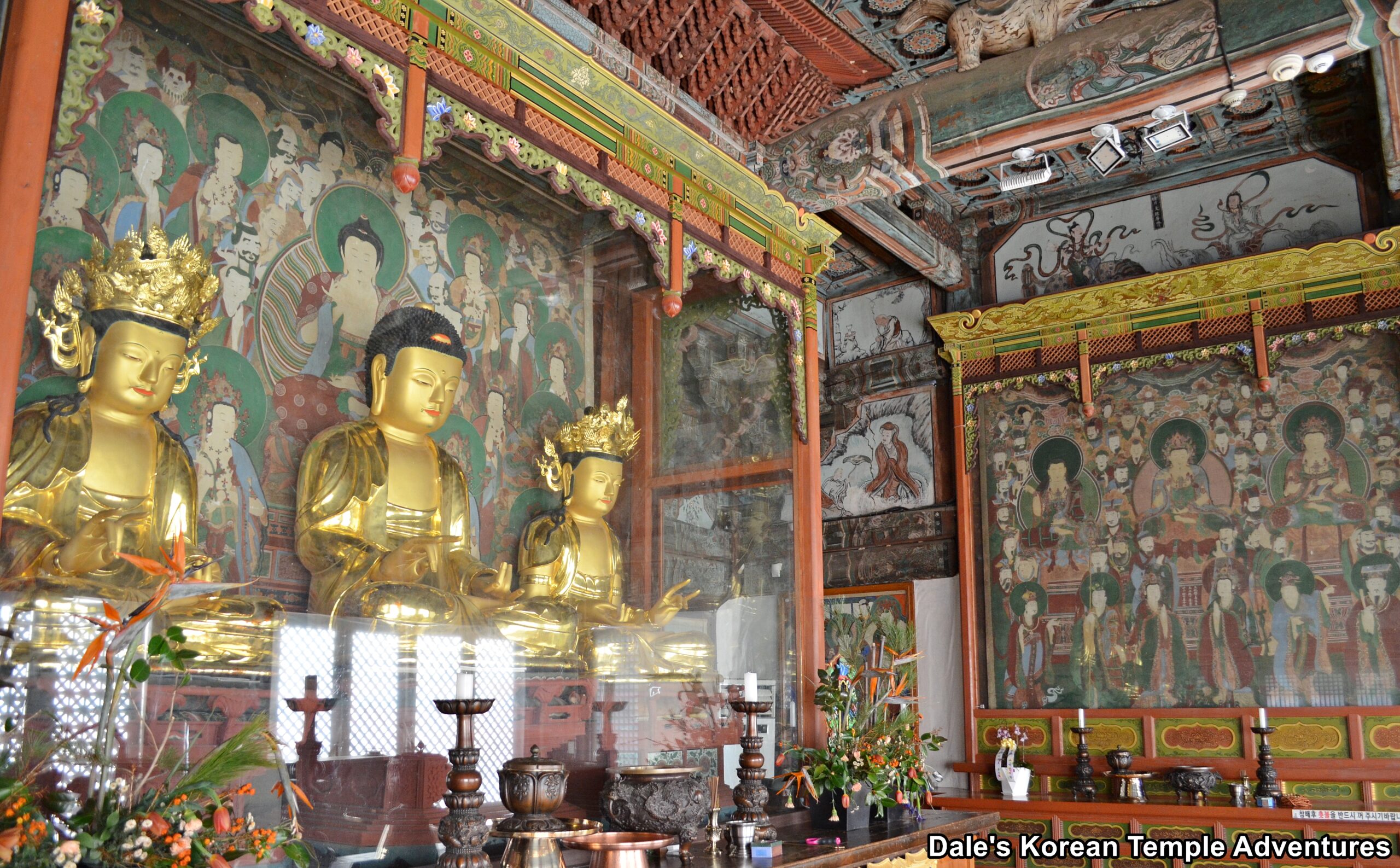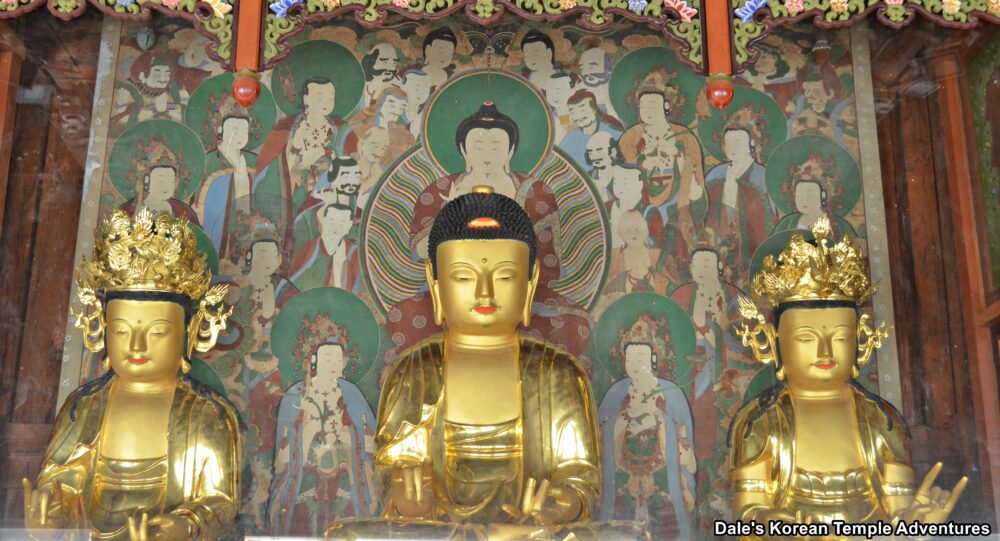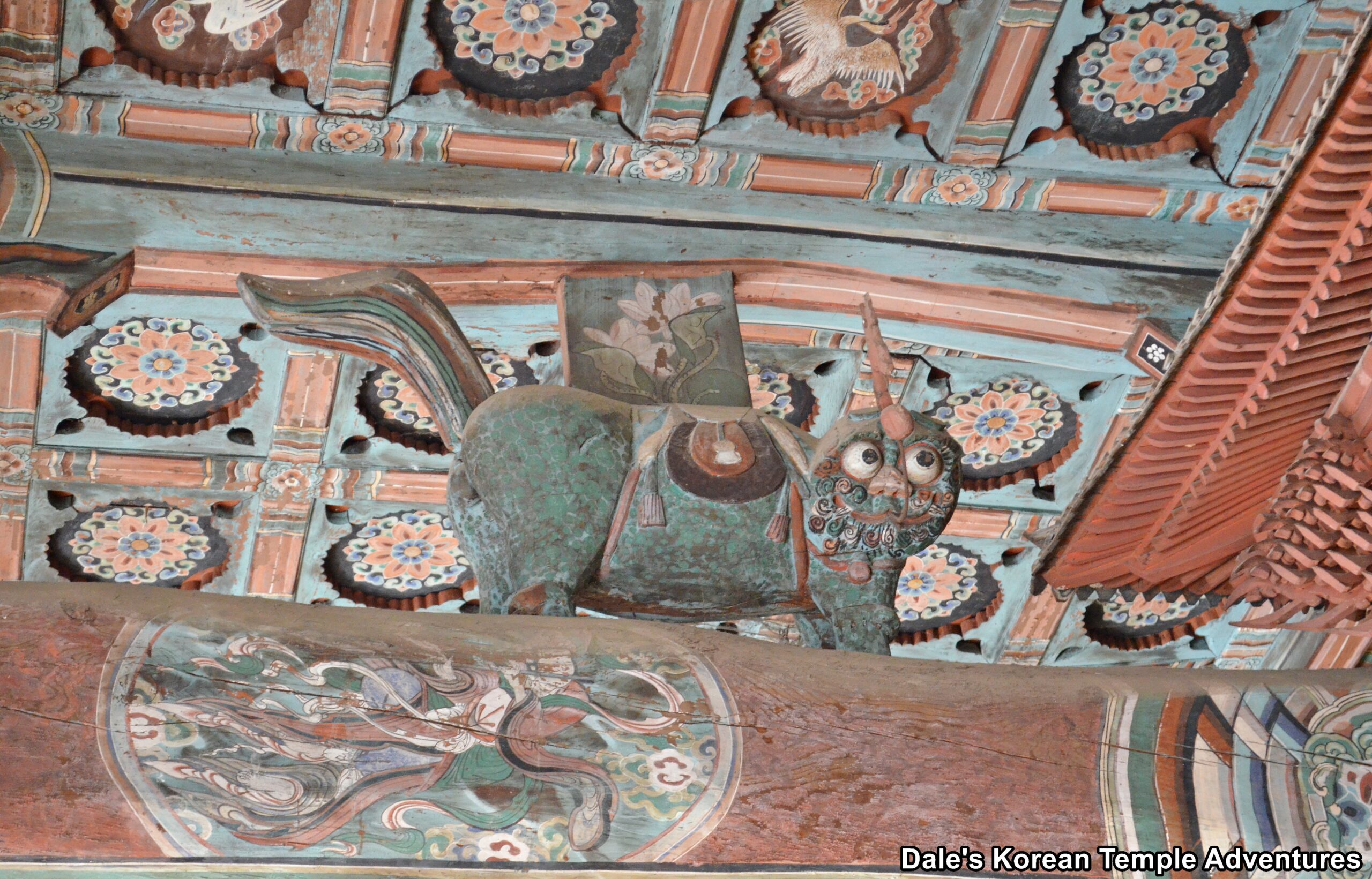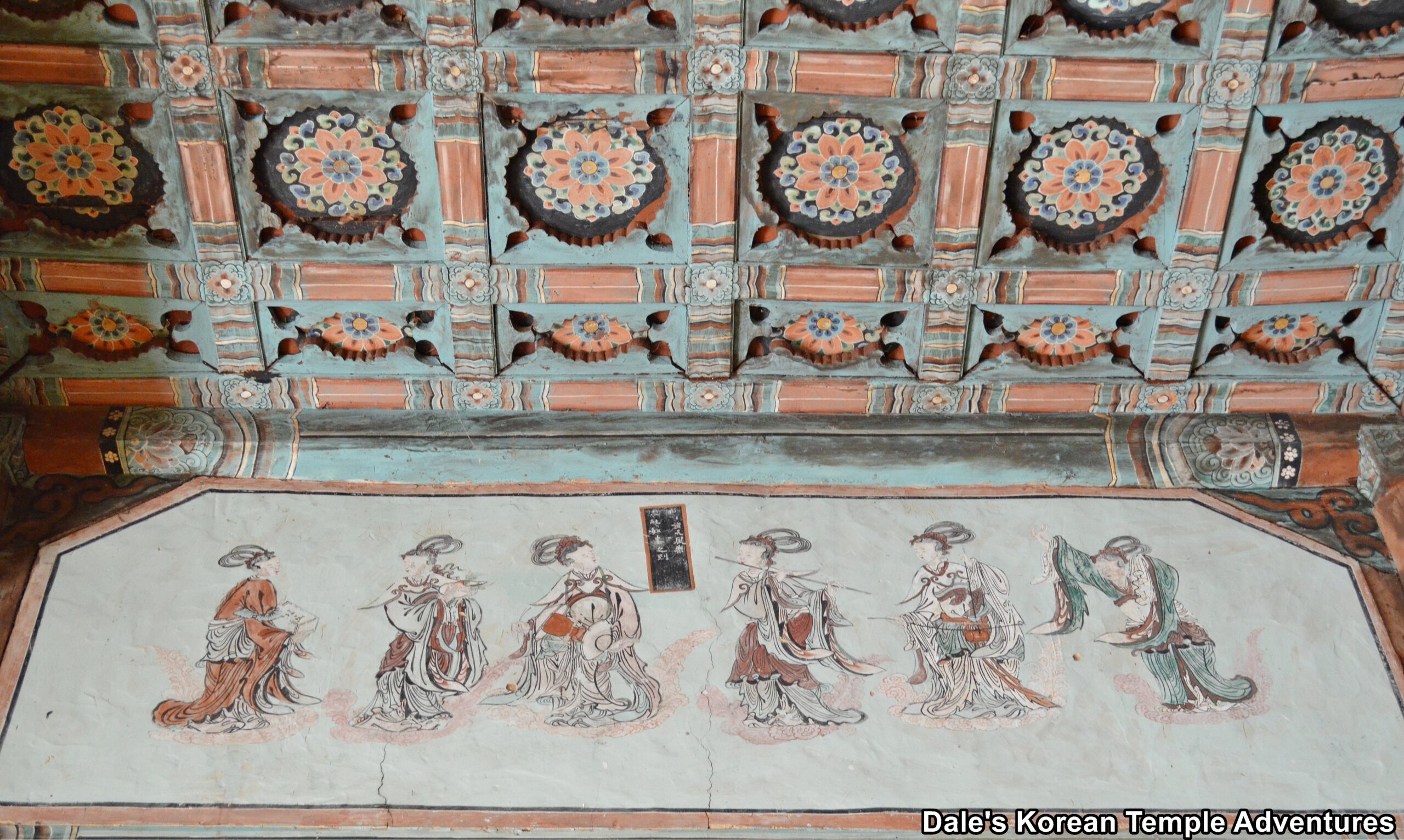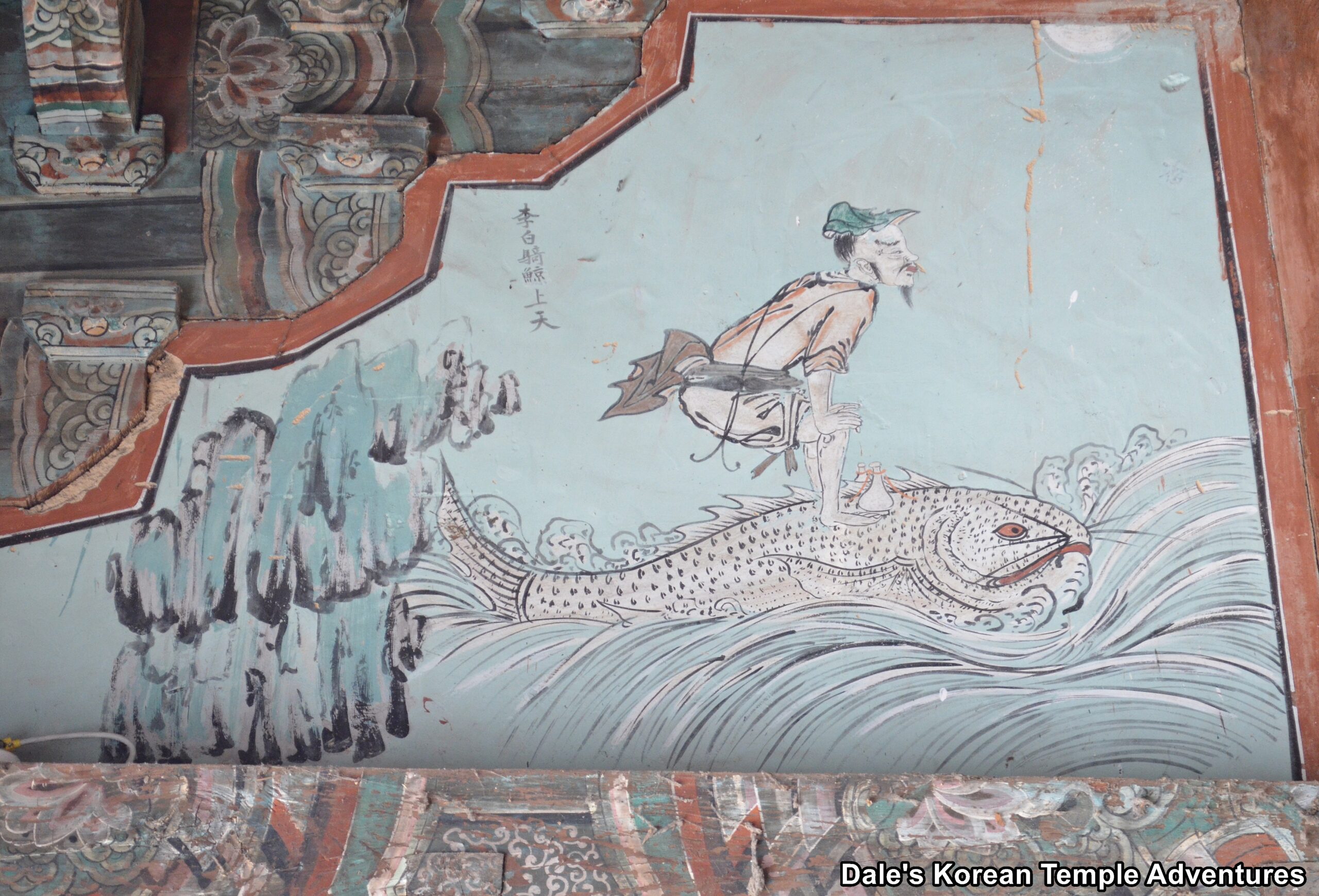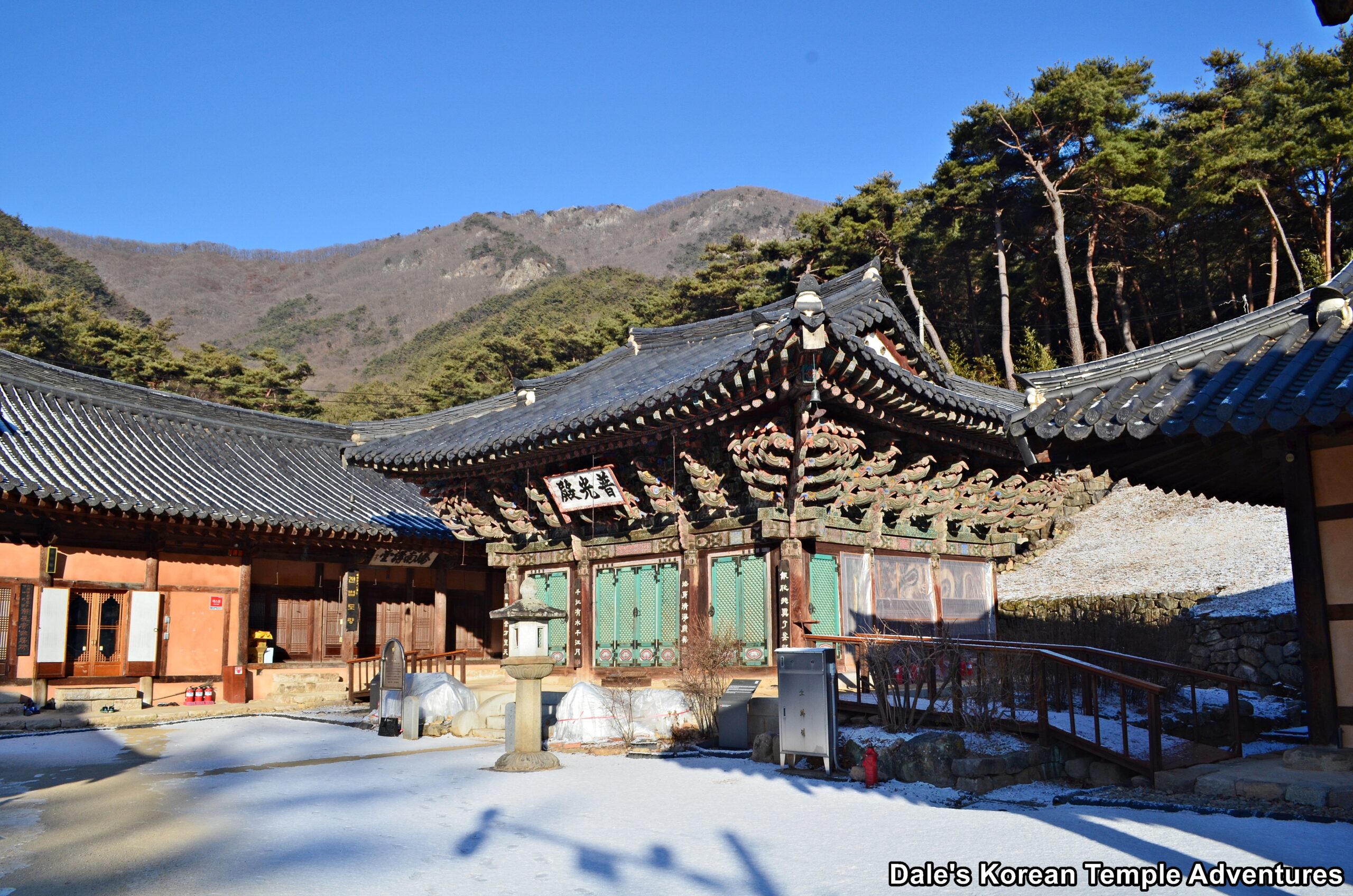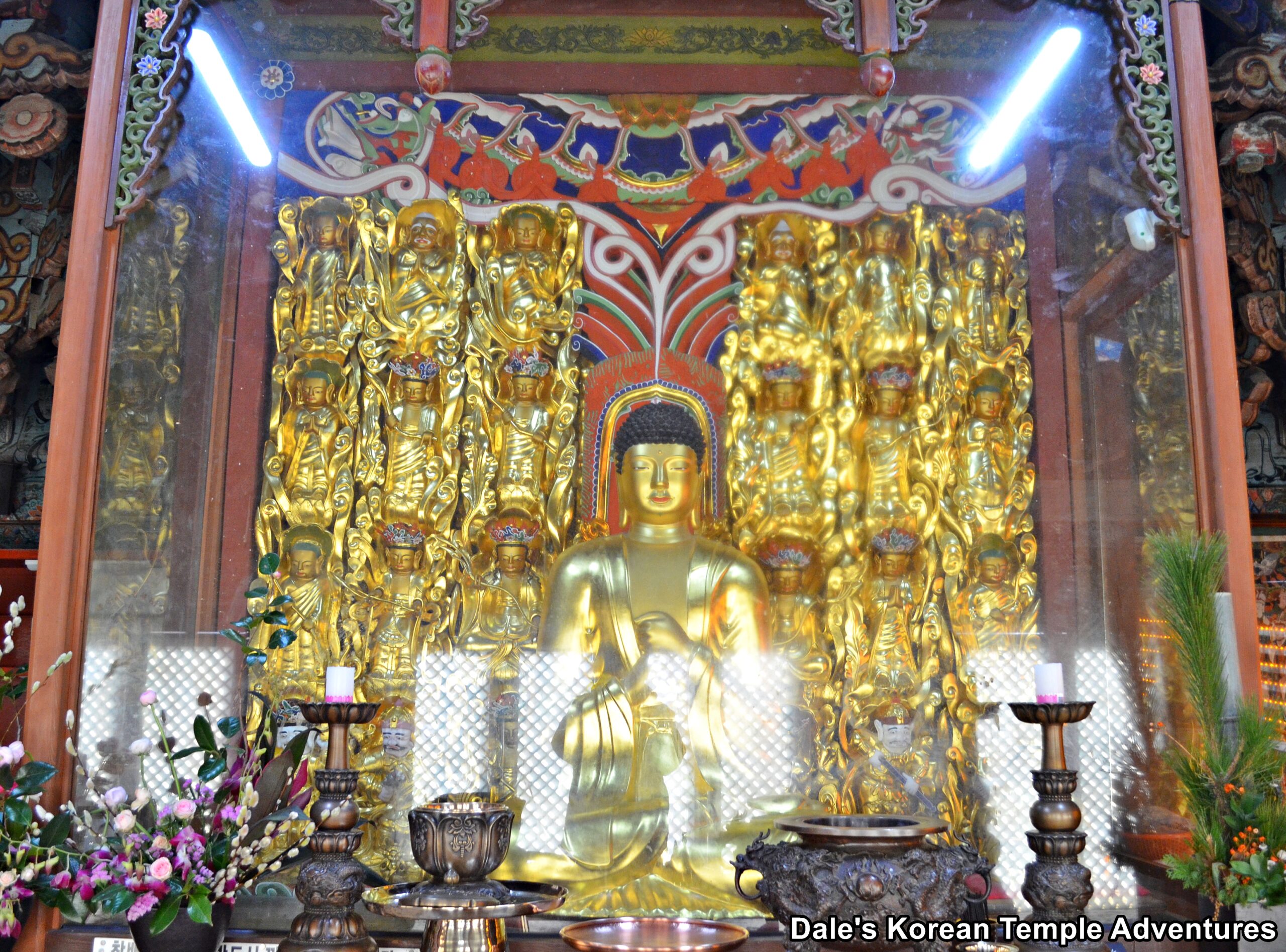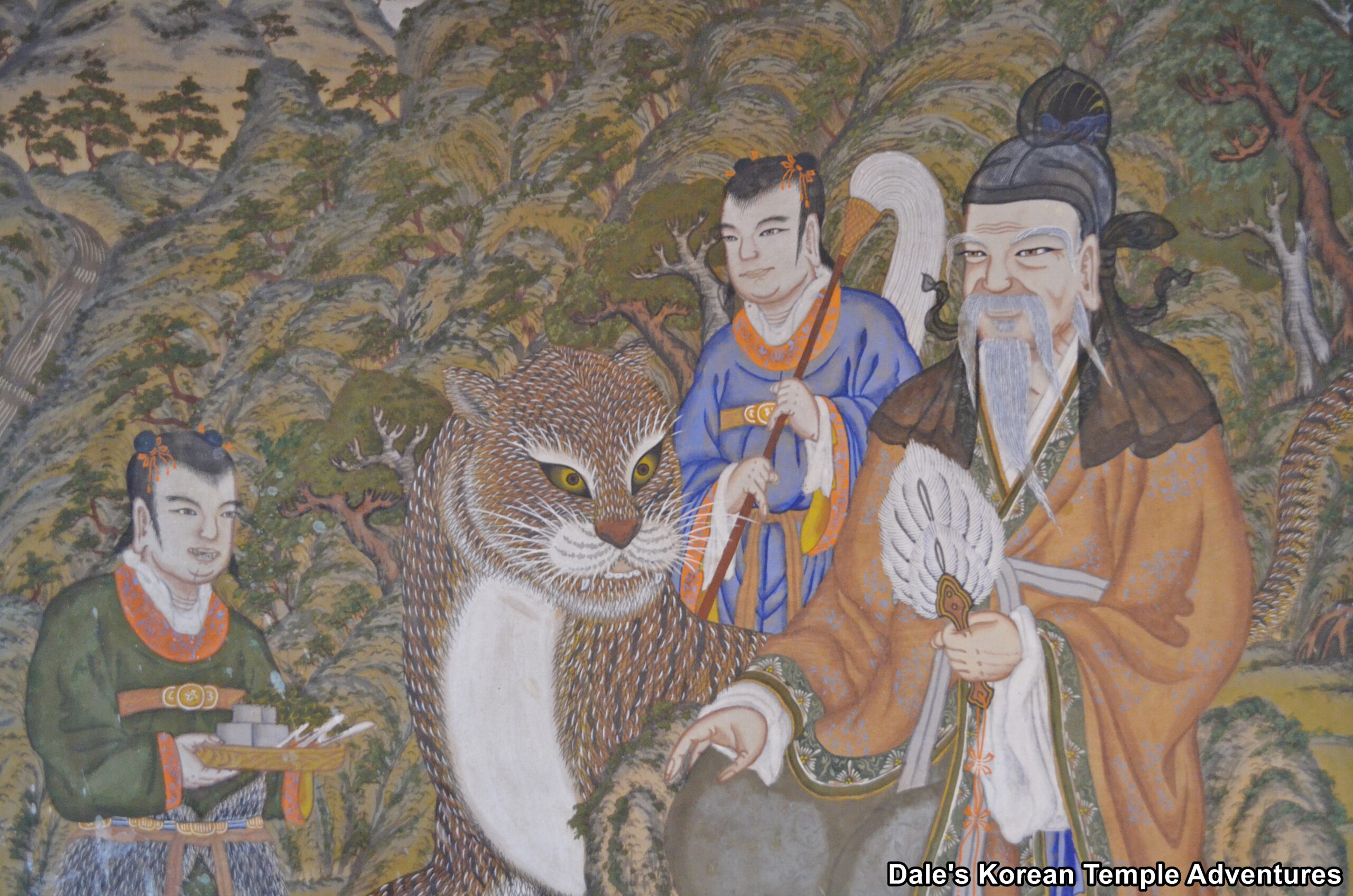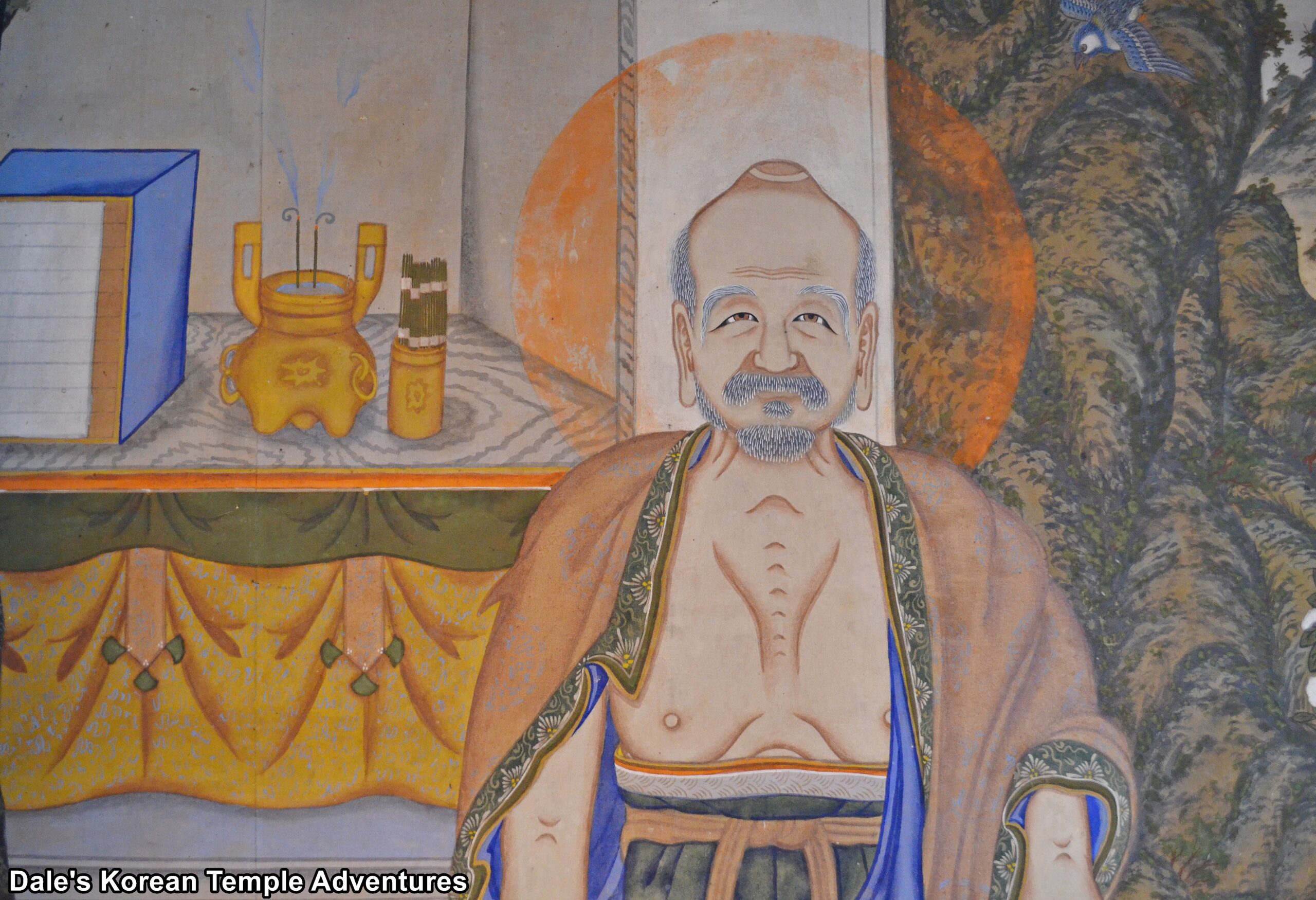Namjangsa Temple – 남장사 (Sangju, Gyeongsangbuk-do)
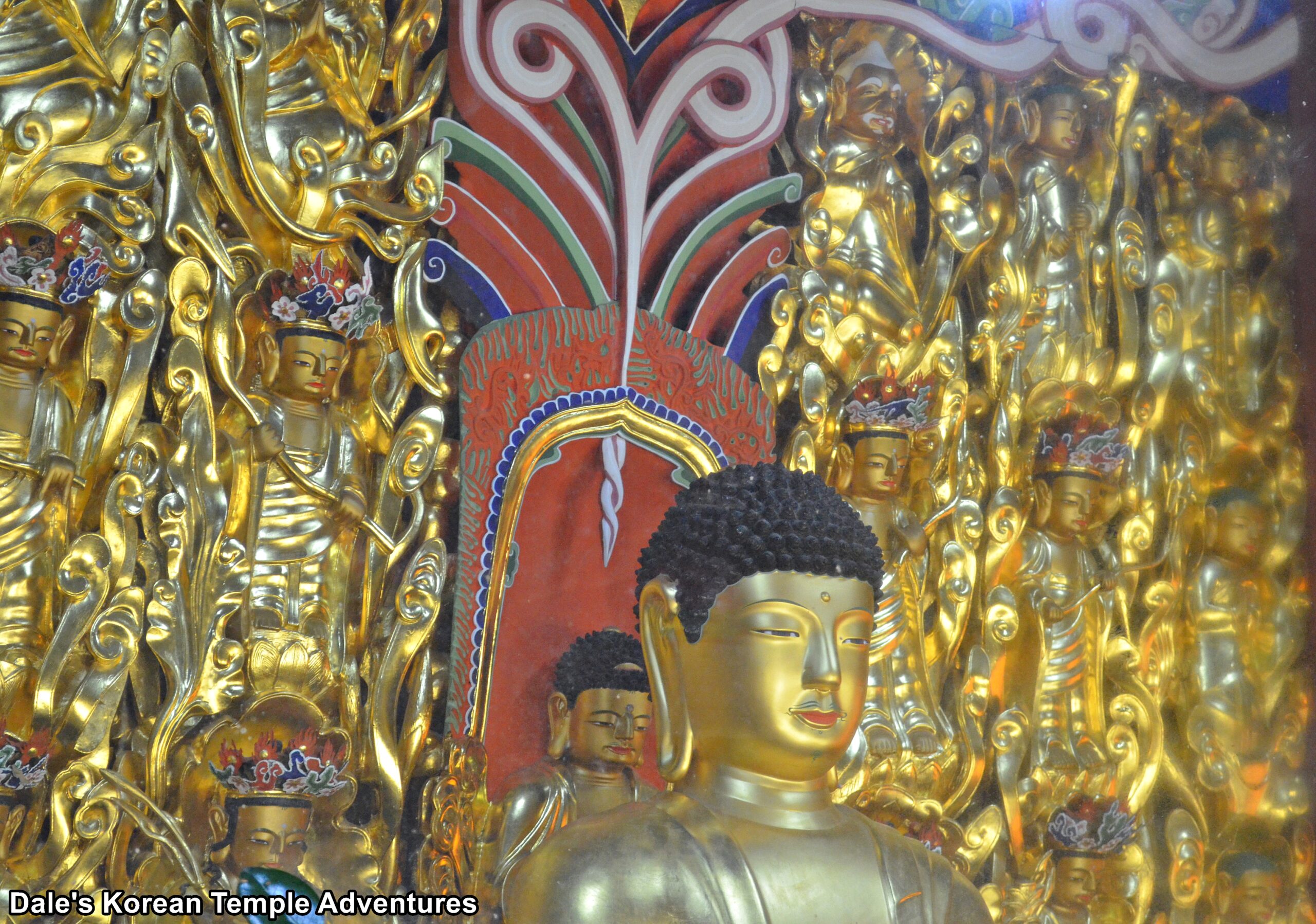
Temple History
Namjangsa Temple is located in northwestern Sangju, Gyeongsangbuk-do in the southern foothills of Mt. Noeumsan (725.5 m). The temple was first established in 832 A.D. after the monk Jingam-seonsa (774-850 A.D.) returned from Tang China (618–690, 705–907 A.D.) in 830 A.D. At this time, when Jingam-seonsa first established the temple, it was known as Jangbaeksa Temple. The temple was reconstructed in 1186 by the monk Gakwon-hwasang and renamed Namjangsa Temple. In 1203, the Geumdang Hall was built, and it was rebuilt, once more, in 1473. Namjangsa Temple was destroyed during the Imjin War (1592-1598). Afterwards, the temple was rebuilt by the monk Jeongsu. The Geumdang Hall was rebuilt in 1635.
Later, and in 1856, the Geukrakbo-jeon Hall was built. This was followed by the Josa-jeon Hall being built in 1867. In 1882, the Iljumun Gate was built. And in 1889, the Bogwang-jeon Hall was built followed by the Sanshin-gak Hall, which is now functionally a Samseong-gak Hall, in 1903.
It’s also believed that Beompae, which is a form of Buddhist chants and songs, was first introduced to the Korean Peninsula when Jingam-seonsa returned from Tang China in 830 A.D. Backtracking a bit, the origins of this form of Buddhist chants and songs might have originated from the musical devotion of the Bodhisattvas at the Assembly of Vulture Peak. It’s also claimed that Beompae was first created by Tsao Chih (192-232 A.D.), who was said to have been inspired by the supernatural sound that he heard at Yushan, or “Fish Mountain” in English. However this form of Buddhist music first started, it was passed along to later generations, where Kang Seng-hui (?-280) wrote parts of Buddhist chants and songs, which would become popular in Southern China. It was these pieces of music penned by Kang Seng-hui that were passed down to Jingam-seonsa, who had been studying in Tang China and ultimately returned to his home of the Unified Silla Kingdom (668-935 A.D.). Originally, it was believed that Ssanggyesa Temple in Hadong, Gyeongsangnam-do was the first place to be introduced and disseminate Beompae; but based upon an inscription written by Choi Chiwon (857-?) found at Ssanggyesa Temple, it’s now believed that Namjangsa Temple is in fact the first Korean home to this style of Buddhist music.
In total, Namjangsa Temple is home to five Korean Treasures. They are the Wooden Amitabha Buddha Altarpiece in Bogwangjeon Hall of Namjangsa Temple, which is Korean Treasure #922; the Iron Seated Vairocana Buddha of Namjangsa Temple, which is Korean Treasure #990; the Wooden Seated Amitabha Buddha Triad of Namjangsa Temple, which is Korean Treasure #1635; the Buddhist Painting of Namjangsa Temple, Sangju (The King of Sweet Dew), which is Korean Treasure #1641; and the Hanging Painting of the Vulture Peak Assembly of Namjangsa Temple, which is Korean Treasure #1640.
Temple Layout
There are two ways to get to the main temple grounds at Namjangsa Temple. There is a road that loops around to the back parking lot to the upper courtyard, and there is a path that leads through the stately Iljumun Gate that dates back to the late 19th century. If it were me, I’d take the latter. Having passed through the Iljumun Gate, you’ll next pass under the two-story Cheonwangmun Gate/Jong-ru Pavilion. The first story of the entry gate acts as the Cheonwangmun Gate. The four exterior walls, both front and back, have faded murals dedicated to the Four Heavenly Kings. As for the second story, it acts as the Jong-ru Pavilion, which houses the four traditional Buddhist percussion instruments.
Having passed through the Cheonwangmun Gate, you’ll be welcomed into the lower courtyard at Namjangsa Temple. To your immediate right and left are the monks’ dorms. Standing off-centre, and to the left of the stone pathway, is a compact three-story stone pagoda. And book-ending the stone pathway, and just before the Geukrakbo-jeon Hall, are a pair of identical seokdeung (stone lanterns).
The exterior walls to the Geukrakbo-jeon Hall are sparsely painted all but for the dancheong colours and a pair of bird murals. Stepping inside the Geukrakbo-jeon Hall, you’ll find a spacious interior. Behind a glass enclosure, you’ll find the Wooden Seated Amitabha Buddha Triad of Namjangsa Temple, which is Korean Treasure #1635. The triad is centred by Amita-bul (The Buddha of the Western Paradise) and joined on either side by Gwanseeum-bosal (The Bodhisattva of Compassion) and Daesaeji-bosal (The Bodhisattva of Wisdom and Power for Amita-bul). According to a scroll found inside of the three statues, the triad was first made in 1645. Furthermore, the triad was made from a large number of donors. Overall, the triad follows the style of the early 17th century. The statues have large, square-shaped faces, broad shoulders, and wide knees. The statues are made with strong, sharp lines. This style was dominant at this time after the Joseon Dynasty (1392-1910) re-emerged in the postwar years of the Imjin War (1592-1598). This was done to reassert the strength that Joseon Buddhism and Buddhists felt at this time, especially after contributing so much to the defence of the Korean Peninsula.
To the left of the main altar is an older Samjang-taenghwa. And to the left of this larger mural is a much smaller Shinjung Taenghwa (Guardian Mural). The entire interior is filled with beautiful older murals including images dedicated to Bicheon (Flying Heavenly Deities), Geumgang-yeoksa (Vajra Warriors), Sinseon (Taoist Immortals), and wood statues up in the eaves of a blue and white haetae (which is a mythical creature that controls and consumes fire). And it’s behind the main altar that you’ll find a long, rectangular box. Housed inside this is the Hanging Painting of the Vulture Peak Assembly of Namjangsa Temple, which is Korean Treasure # 1640. This large gwaebul-style of painting dates back to 1788, when it was created by 22 different monk painters led by Sanggyeom. The painting stands over ten metres in height, and it has Seokgamoni-bul (The Historical Buddha) as the central image. The Hanging Painting of the Vulture Peak Assembly of Namjangsa Temple is typically only unfurled during Buddha’s Birthday celebrations; and as such, it stays housed inside the Geukrakbo-jeon Hall until that festive day.
To the rear of the Geukrakbo-jeon Hall is the two-story Seolbeop-jeon Hall, which acts as an entry to the upper courtyard at Namjangsa Temple. The first story, and its stairs, acts as a entry, while the second story is typically used for larger lectures or gatherings.
Straight ahead of you is the Bogwang-jeon Hall. The exterior walls are adorned with some fabulous dancheong colours, especially up near the eaves of the shrine hall. There’s also a beautiful twisting dragon mural on the right side of the exterior’s structure. Stepping inside the Bogwang-jeon Hall, your eyes will instantly be drawn to the main altar. The main altar image of Birojana-bul (The Buddha of Cosmic Energy) rests inside a glass enclosure. This main altar statue is the Iron Seated Vairocana Buddha of Namjangsa Temple, which is Korean Treasure #990. The statue is believed to date back to early Joseon (1392-1910). However, only the body is original with the head and hands added much later. The robe of Birojana-bul is draped over the shoulders, which softly hangs down to cover the knees. The right hand with only the forefinger stretches upwards with the left hand wrapped around it. This is known as the “The Knowledge Fist.”
Backing the Iron Seated Vairocana Buddha of Namjangsa Temple is the stunning Wooden Amitabha Buddha Altarpiece in Bogwangjeon Hall of Namjangsa Temple, which is Korean Treasure #922. This is a wooden sculpture with various Buddhist iconography. The entire altar piece measures 236 cm wide and 226 cm long. Additionally, it’s 10 to 12 cm thick. In the centre of the image is Amita-bul (The Buddha of the Western Paradise), who is joined by ten Bodhisattvas, ten Nahan, and the Four Heavenly Kings. All the Bodhidsattvas wear a jeweled crown and hold a flower. The Wooden Amitabha Buddha Altarpiece in Bogwangjeon Hall of Namjangsa Temple is believed to date back to the late Joseon Dynasty. Also housed inside the Bogwang-jeon Hall is an older mural dedicated to Jijang-bosal (The Bodhisattva of the Afterlife) and a Shinjung Taenghwa (Guardian Mural).
To the left rear of the Bogwang-jeon Hall, on the other hand, is the Sanshin-gak Hall that functions as a Samseong-gak Hall. The central image dedicated to Chilseong (The Seven Stars) is older in composition, while the accompanying shaman murals dedicated to Dokseong (The Lonely Saint) and Sanshin (The Mountain Spirit) are newer in composition. Rather interestingly, the tiger that joins Sanshin in the painting looks more like a leopard than a tiger so be on the look out for that.
The final Korean Treasure at Namjangsa Temple, which appears to be off-limits to the public is the Buddhist Painting of Namjangsa Temple, Sangju (The King of Sweet Dew). This painting dates back to 1701, and it was painted by Takhwi and other monk artists. Each scene depicted in the mural has a descriptive title to it. The colours are bright with pink and yellow being the dominant colours. The space is divided into the traditional three sections for this style of painting.
How To Get There
There are no direct buses that go to Namjangsa Temple from the Sangju Intercity Bus Terminal. Instead, you’ll need to take a taxi from the Sangju Intercity Bus Terminal to get to Namjangsa Temple. Fortunately, the distance isn’t terrible. In total, the taxi ride will last about 15 minutes, over 6.6 km, and it’ll cost you round 7,000 won (one way).
Overall Rating: 8/10
Namjangsa Temple is one of those temples that you’ve probably never heard about before; and despite that, it houses an incredible 5 Korean Treasures. All are stunning, especially the Wooden Amitabha Buddha Altarpiece in Bogwangjeon Hall of Namjangsa Temple, which is rare. The only other time I’ve seen something similar was at Yongmunsa Temple in Yecheon, Gyeongsangbuk-do. Additionally, the Iron Seated Vairocana Buddha of Namjangsa Temple and the Wooden Seated Amitabha Buddha Triad of Namjangsa Temple are quite remarkable, as well, as is the the interior of the Geukrakbo-jeon Hall and the Iljumun Gate at the entry of the temple grounds.
